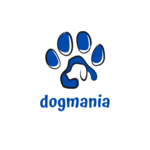Transitioning to Raw: Top Tips for a Healthy Diet Shift for Your Dog
Transitioning your dog to a raw diet can be a rewarding decision, offering numerous health benefits. However, this shift requires careful planning and consideration to ensure a smooth and successful transition. This article provides essential tips and insights to help you navigate the journey of switching your dog's diet to raw food.
Understanding the Benefits of a Raw Diet
A raw diet, often referred to as BARF (Biologically Appropriate Raw Food) or RMBD (Raw Meat-Based Diet), consists of uncooked meats, bones, fruits, and vegetables. Advocates of raw feeding believe it mimics the natural diet of dogs’ wild ancestors, leading to several potential benefits:
1. Improved Digestion: Raw food is typically easier for dogs to digest, reducing the risk of gastrointestinal issues.
2. Healthier Coat and Skin: Many dog owners report shinier coats and healthier skin after switching to raw.
3. Increased Energy Levels: A balanced raw diet can enhance your dog's vitality and energy.
4. Better Dental Health: Chewing raw bones can help clean teeth and reduce plaque buildup.
5. Weight Management: Raw diets can help maintain a healthy weight, especially in dogs prone to obesity.
Preparing for the Transition
Before you begin the transition, consult your veterinarian, especially if your dog has any pre-existing health conditions. A vet can provide tailored advice and ensure that the raw diet meets all nutritional requirements.
Gradual Transition
A gradual transition is often recommended to allow your dog's digestive system to adapt. Sudden changes in diet can lead to stomach upsets and other digestive issues. Here’s a step-by-step guide:
1. Start Slowly: Begin by mixing a small amount of raw food with your dog’s current diet. Gradually increase the proportion of raw food over several weeks.
2. Monitor Reactions: Keep an eye on your dog's stool, energy levels, and overall health. Adjust the transition pace based on these observations.
3. Hydration: Ensure your dog has constant access to fresh water, as a raw diet can sometimes increase water intake needs.
Selecting the Right Ingredients
A balanced raw diet should include a variety of ingredients to ensure all nutritional needs are met:
1. Muscle Meat: This should make up the bulk of the diet. Chicken, beef, turkey, and lamb are popular choices.
2. Bones: Raw bones are essential for dental health and provide calcium and phosphorus. Avoid cooked bones as they can splinter and cause injuries.
3. Organ Meats: Liver, kidney, and heart are nutrient-dense and should constitute about 10% of the diet.
4. Vegetables and Fruits: These can be added in small amounts to provide fiber and additional vitamins. Carrots, spinach, apples, and blueberries are great options.
5. Supplements: Depending on the specific needs of your dog, additional supplements like fish oil, vitamin E, or probiotics might be necessary.
Safe Handling Practices
Handling raw meat requires extra caution to prevent bacterial contamination:
1. Hygiene: Always wash your hands thoroughly after handling raw food. Clean all surfaces and utensils that come into contact with raw meat.
2. Storage: Store raw food in the refrigerator or freezer to keep it fresh. Thaw frozen meat in the fridge rather than at room temperature.
3. Portion Control: Prepare meals in appropriate portions to avoid leftovers, which can spoil quickly.
Monitoring Your Dog’s Health
During the transition, and even after your dog has fully adjusted to the raw diet, regular health checks are crucial:
1. Regular Vet Visits: Schedule regular veterinary check-ups to monitor your dog's health and catch any potential issues early.
2. Weight Management: Keep track of your dog’s weight to ensure they are maintaining a healthy balance. Adjust portion sizes if necessary.
3. Behavioral Changes: Pay attention to any changes in behavior, such as increased energy or lethargy, which can indicate how well they are adapting to the new diet.
Common Challenges and Solutions
Picky Eaters
Some dogs may be hesitant to try new foods. To overcome this:
- Mix Flavors: Combine new raw ingredients with familiar ones to entice your dog.
- Warm the Food: Slightly warming the food can enhance its aroma and appeal.
Nutritional Balance
Ensuring a balanced diet is crucial. Consider consulting with a pet nutritionist who can help you formulate a complete and balanced raw diet plan tailored to your dog’s needs.
Cost and Convenience
Raw feeding can be more expensive and time-consuming than commercial diets. Buying in bulk, prepping meals in advance, and exploring local meat suppliers can help manage costs and effort.
conclusion
Transitioning your dog to a raw diet can offer numerous health benefits, from improved digestion to a shinier coat. However, it requires careful planning, gradual transition, and continuous monitoring. By following these tips and consulting with professionals, you can make the shift smoothly and provide your dog with a nutritious and satisfying diet. Remember, every dog is unique, so patience and attentiveness are key to a successful transition.



leave me your thoughts here